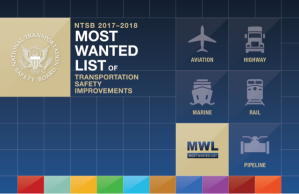By Nicholas Worrell
 When I asked the audience at the Catawba County Branch of the North Carolina NAACP in Maiden if they could identify the leading cause of death in teens, they replied with silence.
When I asked the audience at the Catawba County Branch of the North Carolina NAACP in Maiden if they could identify the leading cause of death in teens, they replied with silence.
After waiting in vain for an answer, I told them. “Motor vehicle crashes,” I said, and explained that teens are 1.6 times more likely to die in motor vehicle crashes than adults.
NTSB Safety Advocate Stephanie Shaw and I were invited to this November 13 meeting by the chapter’s youth director, Lacolia Mungro, whose experiences driving an 18wheeler have encouraged her to spread the message about the risks of distracted driving.
I told the audience that 35,092 people died on US roadways in 2015, which is more than 10 times the population of Maiden. That number is on track to be even higher this year, which has prompted the NTSB to include issues like distracted driving, impaired driving, and fatigue on our 2017–2018 Most Wanted List of transportation safety improvements. We emphasize outreach to teens because that demographic, overrepresented in highway crashes, has more to lose than older drivers, considering the years of life ahead of them and the milestones they have yet to experience, like graduation, job success, marriage, and raising children. Missing out on those life experiences is a stiff price to pay because of one bad choice made early in life.
We also seek out opportunities to speak to teens because they represent tomorrow’s road safety culture. It’s essential to instill safe driving practices in teens who have not yet accumulated a lifetime of unsafe driving habits.
In 2014, 40,650 crashes in North Carolina involved teenagers; 95 were killed and 10,491 were injured. As I told the group in Maiden, a properly worn seat belt is the greatest protection against injury and death in a vehicle accident. Of those 95 teens killed in 2014, 33 were not wearing seat belts.
“No call, no text, no update is worth a human life,” I told the audience. Then I encouraged them to join our advocacy efforts by buckling up and turning off their phones or putting them out of reach, because no one should have to miss out on life because of one bad decision made in youth.
Nicholas Worrell is the Chief of NTSB’s Safety Advocacy division

